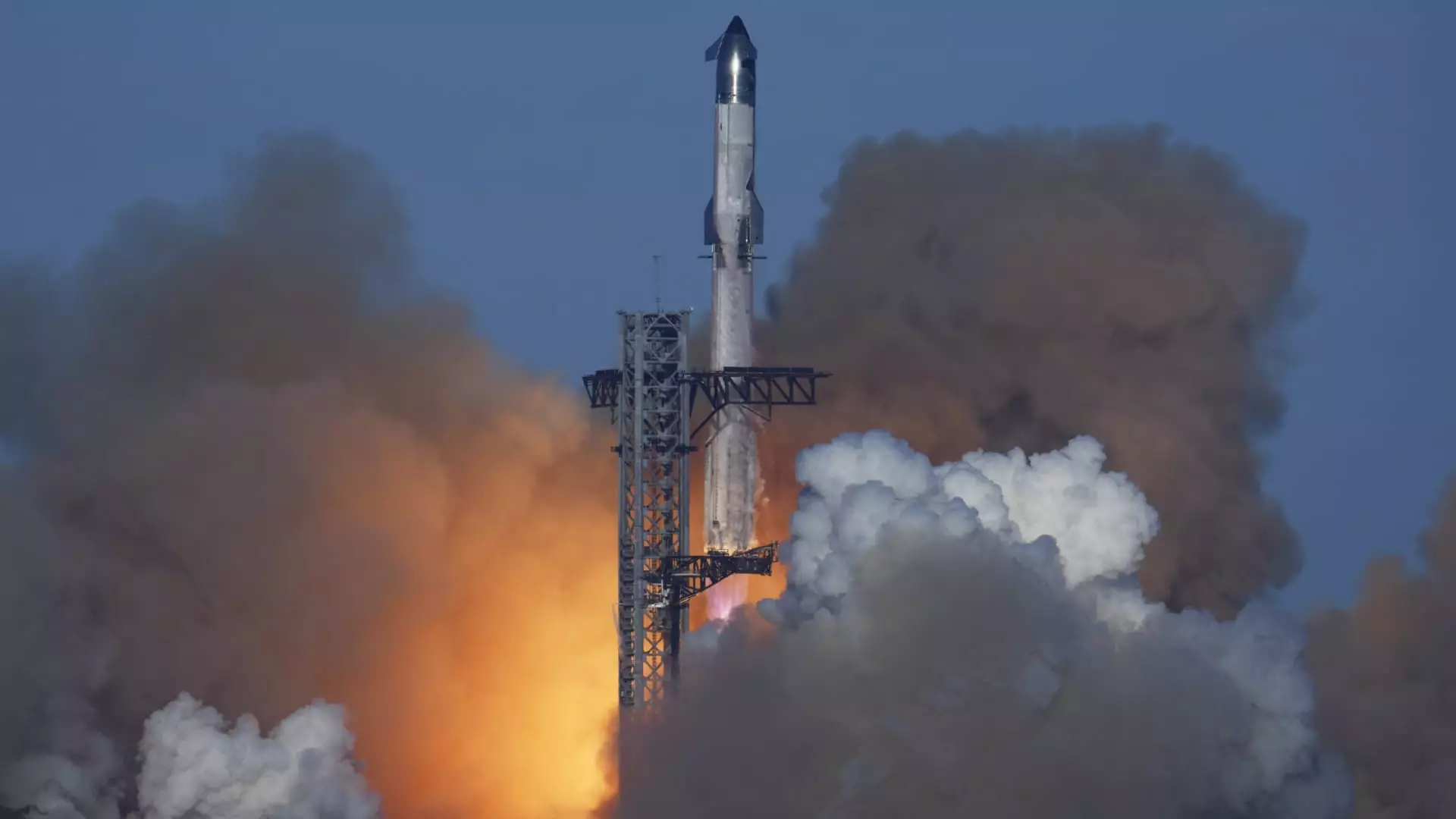In a development that underscores the risks inherent in space exploration, the Federal Aviation Administration (FAA) announced on Friday that SpaceX’s Starship rocket is officially grounded. This decision follows a midflight failure during the latest test attempt that not only culminated in an explosion shortly after launch but also had ramifications for commercial air travel. As airlines, notably American Airlines, JetBlue Airways, and Delta Air Lines, were compelled to reroute their flights to ensure safety in the wake of the incident, it’s clear that the impacts of this failure extend well beyond SpaceX’s operations.
The FAA has indicated that while there were no reported injuries to members of the public, substantial property damage occurred in areas such as the Turks and Caicos Islands. This raises pressing questions about accountability and risk management for companies engaged in high-stakes aerospace ventures. With such failures potentially affecting civilian life, the regulator’s insistence on a thorough investigation before granting a new launch license is emblematic of its duty to ensure public safety in the rapidly evolving commercial space sector.
The aftermath of the Starship explosion bore immediate consequences for commercial aviation. The FAA’s call to activate a “Debris Response Area” reflects a proactive stance, emphasizing the necessity for rigorous safety measures during flight operations, especially when space activities intersect with commercial air travel routes. This procedural activation highlighted lapses in communication, as initial statements from SpaceX indicated that debris fell within designated hazard areas, a claim that later stood in contrast to the FAA’s own assessment.
The complexities of these situations become evident when considering the balance between advancing aerospace technology and ensuring safety for the general public. SpaceX, while at the forefront of innovation, now faces the necessity of introspective evaluation of its operational protocols following the incident.
A key component of the FAA’s decision to ground Starship includes the requirement for SpaceX to conduct a complete investigation into the failure and implement any necessary corrective measures to mitigate future risks. This conditioning reflects the FAA’s regulatory authority and its mandate to prevent any recurring episodes that could jeopardize public safety or disrupt civilian air travel.
While in the interim, SpaceX’s communication strategy will be pivotal. Clarity and transparency in their statements will be vital as they navigate the constraints placed upon them by the FAA. The quagmire surrounding the conflicting reports illustrates the increasing need for effective dialogue between aerospace companies and regulatory bodies.
The grounding of SpaceX’s Starship serves as a stark reminder of the complexities facing the burgeoning space industry. The interrelationship between innovation, regulation, and public safety must be continuously navigated with diligence and care, as any misstep could resonate widely across multiple sectors. As we move forward, it is crucial for both SpaceX and the FAA to collaboratively address these challenges to recalibrate the trajectory of commercial space exploration.

